|
|
|
VILPREY Georges de.
La Halte ou le Poilu de 14. De la souffrance ... De l' amour... Nouvelle édition.
Fontenoy-en-Puisaye ( Yonne), Editions de la Vieille Tour, 1960 ; in-8°, broché, couverture balanche -imprimée en noir et rouge; 364pp., 2ff. Très rares piqûres à 6 feuillets, déchirure au 2ème plat de la couverture , sans manque de papier.
Referentie van de boekhandelaar : c3755
|
|
|
Villard Henry
Looping the Loop - Posters of Flight
W. W. Norton & Company 2008 In-4 relié 33,3 cm sur 25,9. 160 pages. Très bon état d’occasion.
Referentie van de boekhandelaar : 64410 ISBN : 967007623
|
|
|
VILLON JACQUES. (NE GASTON EMILE DUCHAMP. 1875-1963).
MUSEE NATIONAL D'ART MODERNE. 5 FEVRIER - 23 MARS 1951.
PARIS. EDITIONS DES MUSEES NATIONAUX - MOURLOT. 1951. AFFICHE ORIGINALE LITHOGRAPHIEE EN COULEURS, SOUS VERRE, ENCADREMENT D'EPOQUE BAGUETTE DOREE (50 X 62 X 1,5 CENTIMETRES ENVIRON). BON ETAT.
Referentie van de boekhandelaar : 241
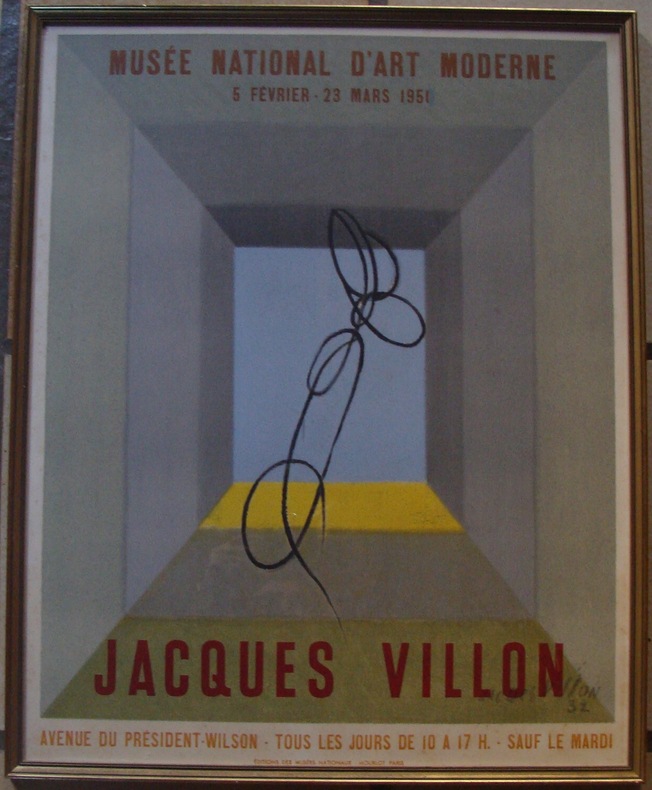
|
|
|
VILLON Jacques:
Peintures. Galerie Louis Carré, Paris.
Affiche, lithographie (punaises) 52 x 70,5. Imprimée par Mourlot.
Referentie van de boekhandelaar : 7808
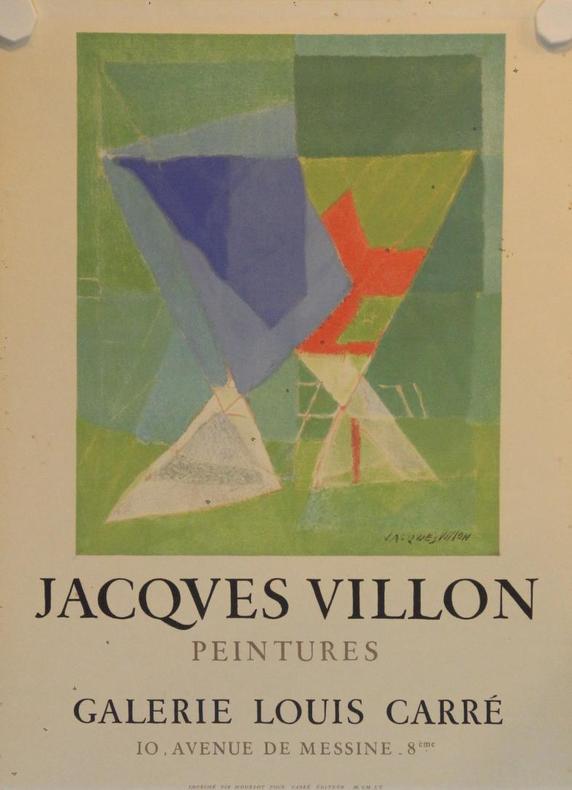
|
|
|
Villemot
Sérigraphie de Villemot : Une nuit en voiture-lit
Sérigraphie 1983 "Magnifique sérigraphie en couleurs (image de 60,5 x 60,5 cm sur support 70,5 x 75 cm) numérotée (n°12 sur 100) et signée par Villemot. Cette illustration ""Une nuit en voiture-lit"" est utilisée comme publicité pour les trains-couchette de la SNCF ; quelques rousseurs, pliures et une petite déchirure sans manque dans les marges (sauf une rousseur, située dans la partie blanche de l'image), par ailleurs bon état général. Livraison a domicile (La Poste) ou en Mondial Relay sur simple demande."
Referentie van de boekhandelaar : af56
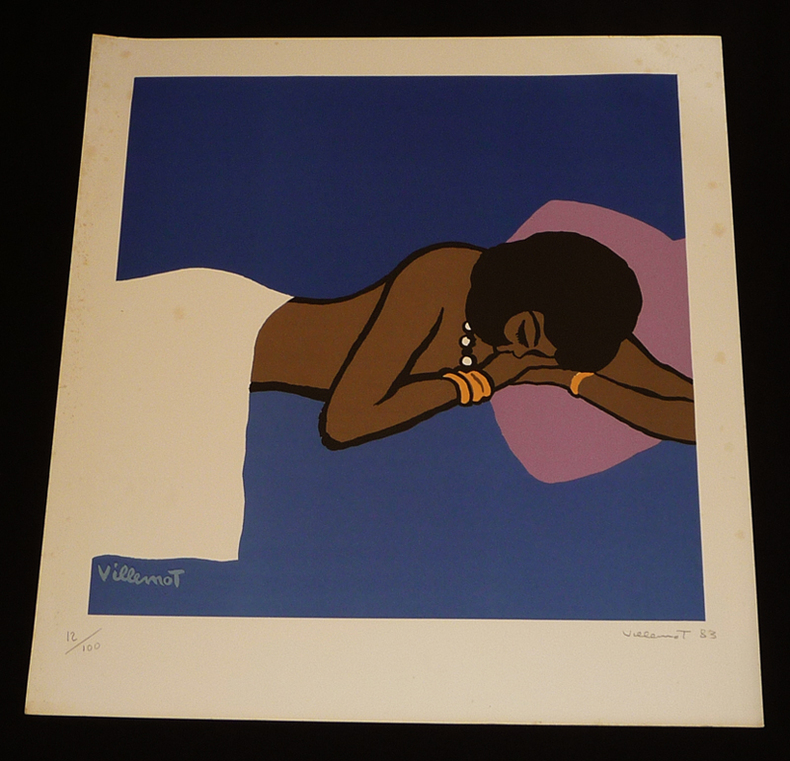
|
|
|
VILLON JACQUES (1875-1963)
XVème Salon de Mai 1959
1959 affiche Paris, 616x450mm, impression lithographique Mourlot.Petit manque au coin inférieur droit. (102994)
Referentie van de boekhandelaar : 102994
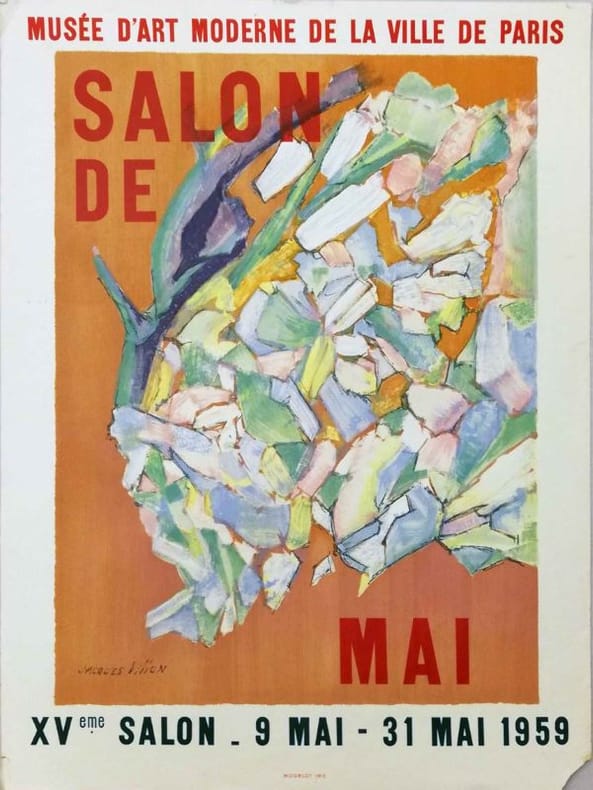
|
|
|
Villeglé
Volume III + Volume IV du Catalogue thématique des affiches Lacérées De Villeglé: La Lettre Lacérée (1949-1962), La Lettre Lacérée (1963-1989), 2 Tomes /Bände
Marval, Paris 1990. Broschiert Wie Neu
Referentie van de boekhandelaar : 022647

|
|
|
Vilà- La Samaritaine.
Deux Créateurs Une Oeuvre. Samaritaine. Progrès Constants...
Une affiche de dimensions 75x60 représentant les magasins de La Samaritaine et en Médaillons M. et Mme. Ernest et Louise Cognacq. Impression lithographique en bleu et brun, sur papier fort ,par l'imprimerie Draeger Très bel état. Voir photo.
|
|
|
VINCE VAUGHT - ANNE HECHE
AFFICHE DE CINEMA - PSYCHO
GUS VAN SANT. 1999. In-12. Broché. Bon état, Couv. convenable, Dos satisfaisant, Intérieur frais. 60 x 155 cm avec en badeau la date de sortie.. . . . Classification : 0-Affiches Cinéma
Referentie van de boekhandelaar : R100000462
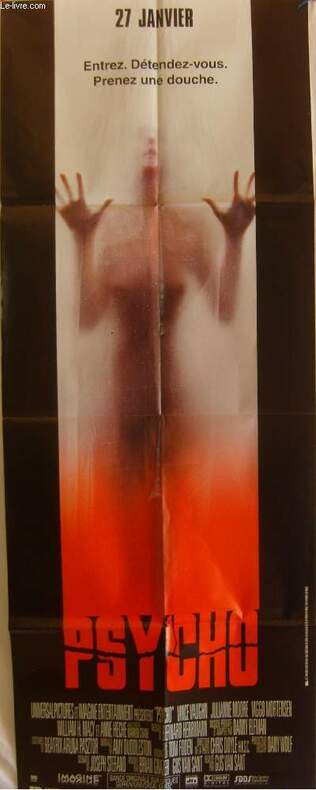
|
|
|
VINCE VAUGHT - ANNE HECHE
AFFICHE DE CINEMA - PSYCHO
GUS VAN SANT. 1999. In-12. Broché. Bon état, Couv. convenable, Dos satisfaisant, Intérieur frais. 9 photos de présentations 21 x 27cm.. . . . Classification : 0-Affiches Cinéma
Referentie van de boekhandelaar : R100000484

|
|
|
VINCE VAUGHT - ANNE HECHE
AFFICHE DE CINEMA - PSYCHO
GUS VAN SANT. 1999. In-12. Broché. Bon état, Couv. convenable, Dos satisfaisant, Intérieur frais. Affiche de cinéma 42 x 29 cm.. . . . Classification : 0-Affiches Cinéma
Referentie van de boekhandelaar : R100000369
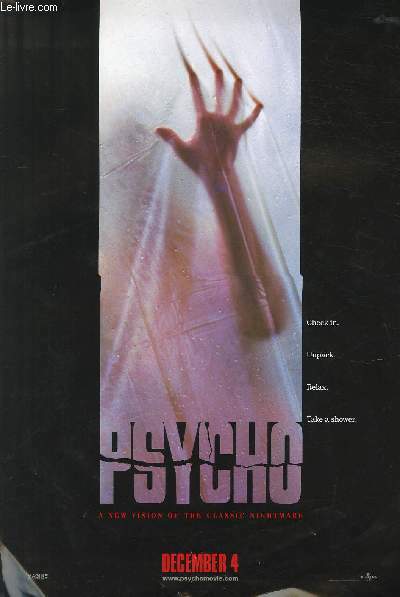
|
|
|
VINCE VAUGHT - ANNE HECHE
AFFICHE DE CINEMA - PSYCHO
GUS VAN SANT. 1996. In-12. Broché. Bon état, Couv. convenable, Dos satisfaisant, Intérieur frais. Affiche de cinéma 120 cm x 160 cm. + 12 photos de présentation de 27 x 21 cm.. . . . Classification : 0-Affiches Cinéma
Referentie van de boekhandelaar : R100000267
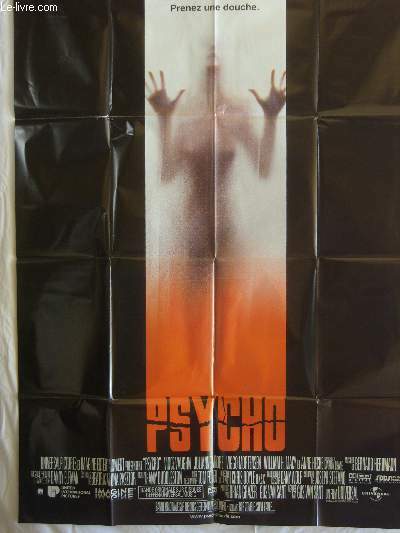
|
|
|
VINCENT LIDON - PATRICK TIMSIT
AFFICHE DE CINEMA - PAPARAZZI
ALAIN BEBERIAN. 1998. In-12. Broché. Bon état, Couv. convenable, Dos satisfaisant, Intérieur frais. Affiche de cinéma 120 cm x 160 cm.. . . . Classification : 0-Affiches Cinéma
Referentie van de boekhandelaar : R100000302
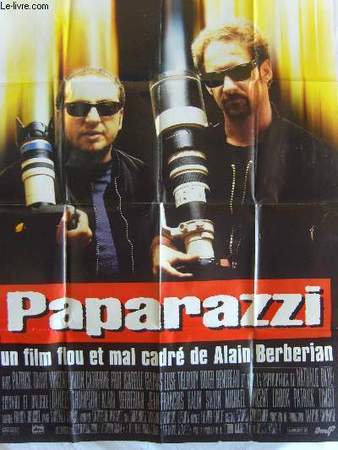
|
|
|
Vincent René:
Lawn tennis.
Archives internationales, collection dessins d'archives. Sérigraphie au format 50 x 70 cm., à l'état de neuf.
Referentie van de boekhandelaar : 3023
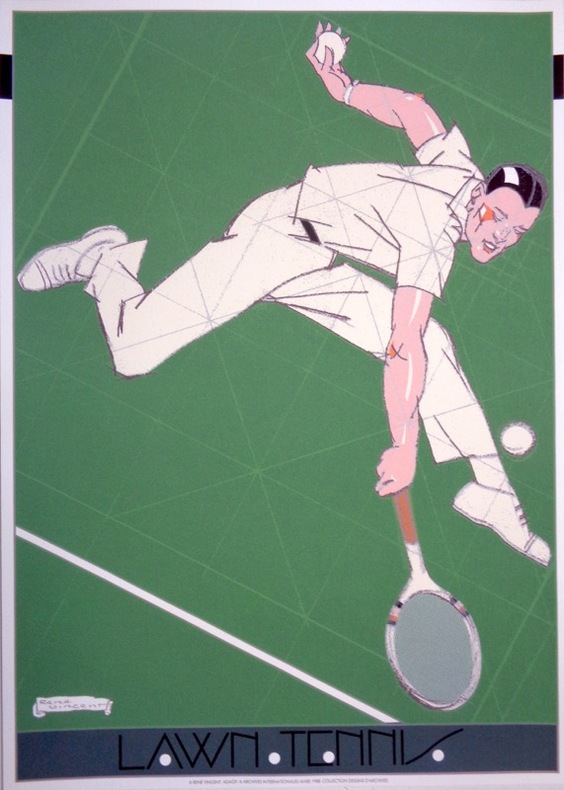
|
|
|
Vincent René:
Porto ramos-pinto.
Vercasson, sans date. Affiche publicitaire au format 48 x 68. Légères traces de plis, petit manque au coin inférieur, petite déchirure sans manque.
Referentie van de boekhandelaar : 7019
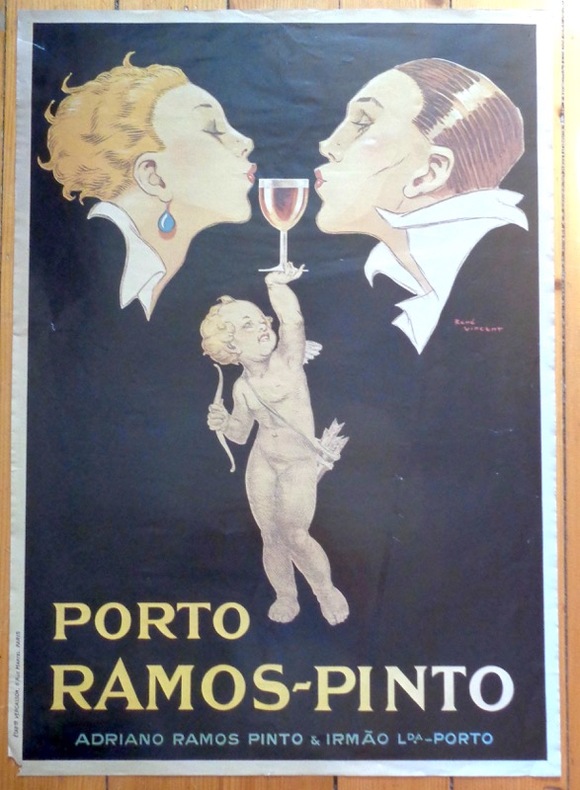
|
|
|
Vincent René:
Snow life scene.
Archives internationales, collection dessins d'archives. Sérigraphie au format 50 x 70 cm., à l'état de neuf.
Referentie van de boekhandelaar : 3024
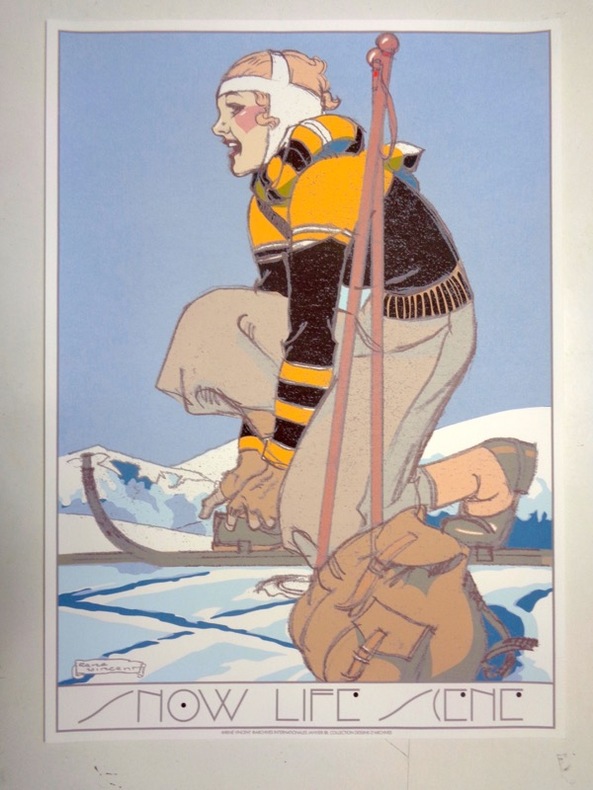
|
|
|
Vincent René:
Woman Pilot.
Archives internationales, collection dessins d'archives. Sérigraphie au format 50 x 70 cm., à l'état de neuf.
Referentie van de boekhandelaar : 3025
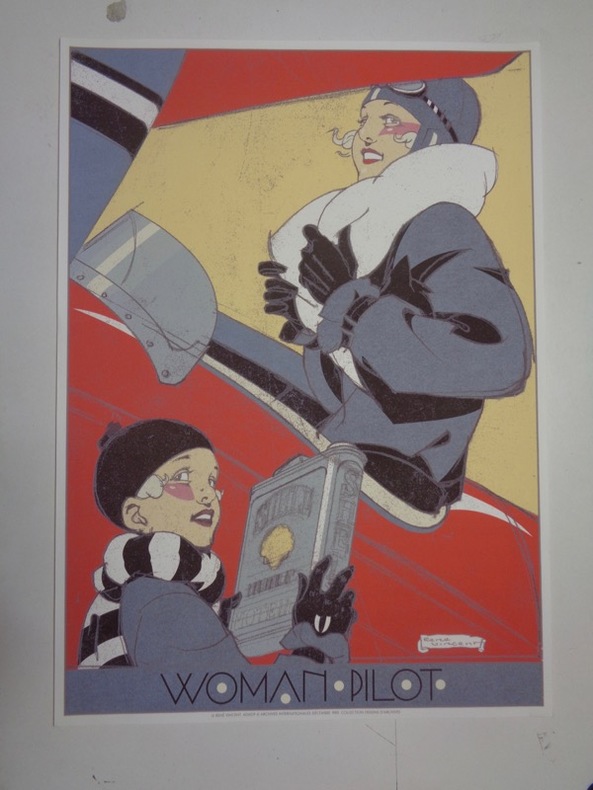
|
|
|
VION (Raoul)
Affiche lithographiée : Ils se fournissent tous chez Decelle!Librairie - Papeterie - Imprimerie. Fantaisies et souvenirs en tout genre/
Compiègne Decelle ca. 1912 79,5 x 120 cm
Referentie van de boekhandelaar : 17348
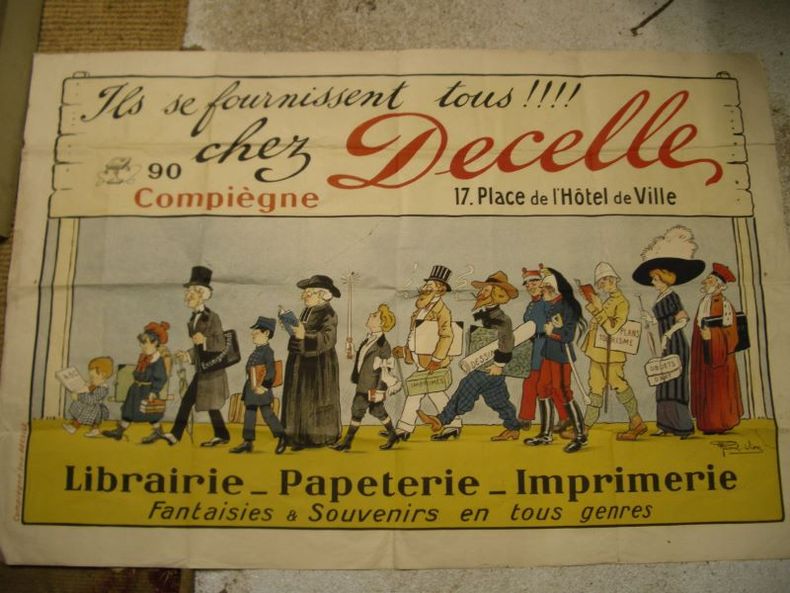
|
|
|
VISCONTI (Luchino).
"Ludwig, Le Crépuscule des Dieux"
1972 Maquette originale de l'affiche, pour la version Belge, en deux langues, éditée en 1972, collage support photo, aquarelle et gouache.
Referentie van de boekhandelaar : 23457
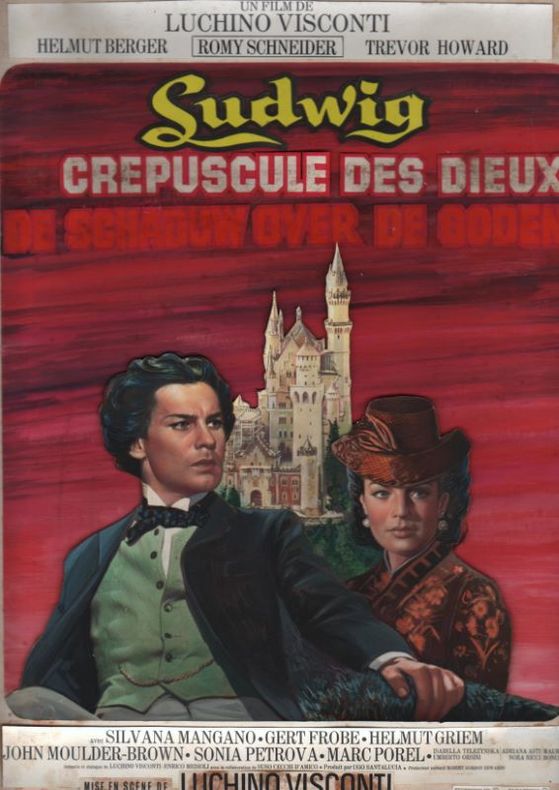
|
|
|
Visholm, Henning
Farboffset-Druck, ohne Titel [Prozession mit Danebrogs].
1981. Darstellung: 48,5 x 69,7 cm. Bogenmaß: 62 x 80 cm;
Referentie van de boekhandelaar : 91369

|
|
|
VISSCHER Claes Jansz
(L'arrestation de Jésus). Gravure originale du XVIIe siècle
- s.n., s.l. (Hollande) (Circa 1600), 33x27,5cm (cuvettes: 13x21cm), une feuille. - Gravure originale non signée, réalisée au burin, probablement par Claes Jansz Visscher, dit le Piscator. Epreuve sur papier vergé filigrané, travail du début du XVIIe siècle. Planche composée de deux gravures, chacune illustrant un passage des Evangiles selon Jean, respectivement 13.14: "Si donc je vous ai lavé les pieds, moi, le Seigneur et le Maître, vous devez aussi vous laver les pieds les uns aux autres" et 18.1-2: "Lorsqu'il eut dit ces choses, Jésus alla avec ses disciples de l'autre côté du torrent du Cédron, où se trouvait un jardin, dans lequel il entra, lui et ses disciples. Judas, qui le livrait, connaissait ce lieu, parce que Jésus et ses disciples s'y étaient souvent réunis." (épisode de l'arrestation de Jésus).Légende en latin dans la partie inférieure de chaque gravure.Mentions numérotée "4" dans l'angle inférieur gauche et de caractère "b" dans l'angle inférieur droit dans la première gravure, et mentions numérotée "5" dans l'angle inférieur gauche et de caractère "bb" dans l'angle inférieur droit dans la deuxième gravure.Mention manuscrite "119" en marge dans l'angle supérieur droit de la planche.Une annotation manuscrite ancienne en caractères grecs sous l'angle droit de la cuvette de chaque gravure.Filigrane visible par transparence.Rousseurs et petites traces principalement marginales, un petit trou de brûlure restauré à l'aide d'un morceau de papier collé au dos, sinon bel état de conservation pour cette gravure extrêmement rare et d'une grande fraîcheur. [ENGLISH DESCRIPTION ON DEMAND]

|
|
|
VISSCHER Claes Jansz
(L'arrestation de Jésus). Gravure originale du XVIIe siècle
- s.n., s.l. (Hollande) (Circa 1600), 33x27,5cm (cuvettes: 13x21cm), une feuille. - Gravure originale non signée, réalisée au burin, probablement par Claes Jansz Visscher, dit le Piscator. Epreuve sur papier vergé filigrané, travail du début du XVIIe siècle. Planche composée de deux gravures, chacune illustrant un passage des Evangiles selon Jean, respectivement 18.6: "Lorsque Jésus leur eut dit: C'est moi, ils reculèrent et tombèrent par terre." et 18.10: "Simon Pierre, qui avait une épée, la tira, frappa le serviteur du souverain sacrificateur, et lui coupa l'oreille droite." (épisode de l'arrestation de Jésus).Légende en latin dans la partie inférieure de chaque gravure.Mention numérotée "6" dans l'angle inférieur droit dans la première gravure, et mention numérotée "7" dans l'angle inférieur gauche dans la deuxième gravure.Mention manuscrite "120" en marge dans l'angle supérieur droit de la planche.Une annotation manuscrite ancienne en caractères grecs sous l'angle droit de la cuvette de chaque gravure.Filigrane visible par transparence.Rousseurs et petites traces principalement marginales, un petit trou de brûlure restauré à l'aide d'un morceau de papier collé au dos, sinon bel état de conservation pour cette gravure extrêmement rare et d'une grande fraîcheur. [ENGLISH DESCRIPTION ON DEMAND]

|
|
|
VISSCHER Claes Jansz
(L'arrestation de Jésus). Gravure originale du XVIIe siècle
- s.n., s.l. (Hollande) (Circa 1600), 33x27,5cm (cuvettes: 13x21cm), une feuille. - Gravure originale non signée, réalisée au burin, probablement par Claes Jansz Visscher, dit le Piscator. Epreuve sur papier vergé filigrané, travail du début du XVIIe siècle. Planche composée de deux gravures, toutes deux illustrant un passage des Evangiles selon Jean, respectivement 18.12-16: "La cohorte, le tribun, et les huissiers des Juifs, se saisirent alors de Jésus, et le lièrent. Ils l'emmenèrent d'abord chez Anne; car il était le beau-père de Caïphe, qui était souverain sacrificateur cette année-là. Et Caïphe était celui qui avait donné ce conseil aux Juifs: Il est avantageux qu'un seul homme meure pour le peuple. Simon Pierre, avec un autre disciple, suivait Jésus. Ce disciple était connu du souverain sacrificateur, et il entra avec Jésus dans la cour du souverain sacrificateur; mais Pierre resta dehors près de la porte." (épisode de l'arrestation de Jésus).Légende en latin dans la partie inférieure de chaque gravure.Mentions numérotée "8" dans l'angle inférieur gauche et de caractère "d" dans l'angle inférieur droit dans la première gravure, et mentions numérotée "9" dans l'angle inférieur gauche et de caractère "dd" dans l'angle inférieur droit dans la deuxième gravure.Mention manuscrite "121" en marge dans l'angle supérieur droit de la planche.Une annotation manuscrite ancienne en caractères grecs sous l'angle droit de la cuvette de la première gravure, une autre plus récente et au crayon sous la deuxième gravure.Filigrane visible par transparence.Rousseurs et petites taches principalement marginales, sinon très bel état de conservation pour cette gravure extrêmement rare et d'une grande fraîcheur. [ENGLISH DESCRIPTION ON DEMAND]

|
|
|
VISSCHER Claes Jansz
(L'arrestation de Jésus). Gravure originale du XVIIe siècle
- s.n., s.l. (Hollande) (Circa 1600), 33x27,5cm (cuvettes: 13x20,5cm), une feuille. - Gravure originale non signée, réalisée au burin, probablement par Claes Jansz Visscher, dit le Piscator. Epreuve sur papier vergé filigrané, travail du début du XVIIe siècle. Planche composée de deux gravures, toutes deux illustrant un passage des Evangiles selon Jean, vraisemblablement 18.28-31: "Ils conduisirent Jésus de chez Caïphe au prétoire: c'était le matin. Ils n'entrèrent point eux-mêmes dans le prétoire, afin de ne pas se souiller, et de pouvoir manger la Pâque. Pilate sortit donc pour aller à eux, et il dit: Quelle accusation portez-vous contre cet homme? Ils lui répondirent: Si ce n'était pas un malfaiteur, nous ne te l'aurions pas livré. Sur quoi Pilate leur dit: Prenez-le vous-mêmes, et jugez-le selon votre loi." (épisode de l'arrestation de Jésus).Légende en latin dans la partie inférieure de chaque gravure.Mentions numérotée "10" et de caractère "e" dans l'angle inférieur droit dans la première gravure, et mentions numérotée "11" et de caractère "ee" dans l'angle inférieur droit dans la deuxième gravure.Mention manuscrite "123" en marge dans l'angle supérieur droit de la planche.Une annotation manuscrite en caractères grecs au crayon sous chaque gravure.Filigrane visible par transparence.Légères rousseurs et traces de mouillures principalement marginales, une discrète trace de pliure et une infime restauration marginale à l'aide d'un petit morceau de filmoplast transparent au dos, sinon très bel état de conservation pour cette gravure extrêmement rare et d'une grande fraîcheur. [ENGLISH DESCRIPTION ON DEMAND]

|
|
|
VISSCHER Claes Jansz
(La Passion du Christ). Gravure originale du XVIIe siècle
- s.n., s.l. (Hollande) (Circa 1600), 33x27,5cm (cuvettes: 12x20,5cm), une feuille. - Gravure originale non signée, réalisée au burin, probablement par Claes Jansz Visscher, dit le Piscator. Epreuve sur papier vergé filigrané, travail du début du XVIIe siècle. Planche composée de deux gravures, chacune illustrant un passage des Evangiles selon Jean, respectivement 19.1: "Alors Pilate prit Jésus, et le fit battre de verges." et 19.2: "Les soldats tressèrent une couronne d'épines qu'ils posèrent sur sa tête, et ils le revêtirent d'un manteau de pourpre" (épisode de la Passion du Christ). Légende en latin dans la partie inférieure de chaque gravure. Mentions numérotée "12" et de caractère "f" dans l'angle inférieur droit dans la première gravure, et mentions numérotée "13" et de caractère "ff" dans l'angle inférieur droit dans la deuxième gravure. Mention manuscrite "124" en marge dans l'angle supérieur droit de la planche. Une annotation manuscrite ancienne en caractères grecs sous chaque gravure, une autre au crayon plus récente en bas de la planche. Filigrane visible par transparence. Légères rousseurs et petites traces principalement marginales, un minuscule trou marginal et une restauration marginale à l'aide d'une bande de papier encollée, sans atteinte à la gravure, sinon très bel état de conservation pour cette gravure extrêmement rare et d'une grande fraîcheur. [ENGLISH DESCRIPTION ON DEMAND]

|
|
|
VISSCHER Claes Jansz
Angelus in somnis alia discedere terra Iussit, ad herodis nec remeare domum. (Math. 2.12). Gravure originale du XVIIe siècle
- s.n., s.l. (Hollande) (Circa 1600), 30x27,5cm (cuvette: 25x21cm), une feuille. - Gravure originale non signée, réalisée au burin, probablement par Claes Jansz Visscher, dit le Piscator. Epreuve sur papier vergé filigrané, travail du début du XVIIème siècle. Il s'agit d'une illustration de l'Evangile selon Matthieu 2-12, "Puis, divinement avertis en songe de ne pas retourner vers Hérode, ils regagnèrent leur pays par un autre chemin." Légende en latin dans la partie inférieure de la gravure.Mention numérotée "12" dans l'angle inférieur droit dans la gravure, et mention manuscrite "17" en marge dans l'angle supérieur droit.Une annotation manuscrite ancienne en caractères grecs sous l'angle droit de la cuvette.Filigrane d'une couronne visible par transparence.Infimes rousseurs et taches marginales, petites mouillures angulaires, un minuscule trou, le tout sans atteinte à la gravure, sinon très bel état de conservation pour cette gravure extrêmement rare et d'une grande fraîcheur. [ENGLISH DESCRIPTION ON DEMAND]

|
|
|
VISSCHER Claes Jansz
Audiit ut tristem zebedaei filus unus: Ille refert lacriimis pectus ad usae fluens. Quis te nostra salus, quis te rogo prodet Iesu: Dicito discipilus, hoc bone Christe tuis. (Luce.22.14.). Gravure originale du XVIIe siècle
- s.n., s.l. (Hollande) (Circa 1600), 33x27,5cm (cuvette: 26x20cm), une feuille. - Gravure originale réalisée au burin par Claes Jansz Visscher, dit le Piscator. Epreuve sur papier vergé filigrané, travail du début du XVIIe siècle. Il s'agit d'une illustration des Evangiles selon Luc, 22.14. (épisode de la Cène).Légende en latin dans la partie inférieure de la gravure: "Audiit ut tristem zebedaei filus unus: Ille refert lacriimis pectus ad usae fluens. Quis te nostra salus, quis te rogo prodet Iesu: Dicito discipilus, hoc bone Christe tuis".Signatures des artistes dans la planche.Mention de caractère "aa" dans l'angle inférieur droit dans la gravure, et mention manuscrite "118" en marge dans l'angle supérieur droit.Une annotation manuscrite ancienne en caractères grecs sous l'angle droit de la cuvette.Filigrane visible par transparence.Infimes rousseurs et petites traces principalement marginales, une minuscule déchirure marginale, un petit trou de brûlure restauré à l'aide d'un morceau de papier au dos, une discrète trace de pliure marginale, sinon bel état de conservation pour cette gravure extrêmement rare et d'une grande fraîcheur. [ENGLISH DESCRIPTION ON DEMAND]

|
|
|
VISSCHER Claes Jansz
Factum est autem ut moreretur mendicus, et protaretur ab angelis in sinum Abrahae. (Luc 16.22.). Gravure originale du XVIIe siècle
- s.n., s.l. (Hollande) (Circa 1600), 32,5x27,5cm (cuvette: 25,5x21cm), une feuille. - Gravure originale non signée, probablement réalisée au burin par Claes Jansz Visscher, dit le Piscator. Epreuve sur papier vergé filigrané, travail du début du XVIIe siècle. Il s'agit d'une illustration de l'Evangile selon Luc 16.22, "Le pauvre mourut, et il fut porté par les anges dans le sein d'Abraham." Légende en latin dans la partie inférieure de la gravure. Mention numérotée "2" dans l'angle inférieur droit dans la gravure, et mention manuscrite "81" en marge dans l'angle supérieur droit.Une annotation manuscrite ancienne en caractères grecs sous l'angle droit de la cuvette.Filigrane d'une couronne visible par transparence.Rares et infimes rousseurs marginales, petites taches angulaires sans atteinte à la gravure, un infime manque angulaire, sinon très bel état de conservation pour cette gravure extrêmement rare et d'une grande fraîcheur. [ENGLISH DESCRIPTION ON DEMAND]

|
|
|
VISSCHER Claes Jansz
Homo quidam erat diues, et induebatur purpura et bisso: et epulabatur quotidie splendidè. Et erat quidam mendicus nomine Lazarus, qui iacebat ad ianuam eius, ulceribus plenus: cupiens saturati de micis, quae cadebant de mensa diuitis, sed et canes veniebant, et lingebant ulcera eius. (Luc 16.19.). Gravure originale du XVIIe siècle
- s.n., s.l. (Hollande) (Circa 1600), 32,5x27,5cm (cuvette: 25x21cm), une feuille. - Gravure originale réalisée au burin par Claes Jansz Visscher, dit le Piscator. Epreuve sur papier vergé filigrané, travail du début du XVIIe siècle. Il s'agit d'une illustration de l'Evangile selon Luc 16.19-21, "Il y avait un homme riche, qui était vêtu de pourpre et de fin lin, et qui chaque jour menait joyeuse et brillante vie. Un pauvre, nommé Lazare, était couché à sa porte, couvert d'ulcères, et désireux de se rassasier des miettes qui tombaient de la table du riche; et même les chiens venaient encore lécher ses ulcères."Légende en latin dans la partie inférieure de la gravure. Autre inscription en latin dans la partie supérieure droite de la planche: "Iesus apostolos docens de divite epulone parabolam dicit."Signature de l'artiste dans la planche.Mention "K" dans l'angle supérieur gauche dans la gravure, mention numérotée "1" dans l'angle inférieur droit dans la gravure, et mention manuscrite "80" en marge dans l'angle supérieur droit.Une annotation manuscrite ancienne en caractères grecs sous l'angle droit de la cuvette.Filigrane d'une couronne visible par transparence.Rares et infimes rousseurs marginales, petites taches angulaires sans atteinte à la gravure, sinon très bel état de conservation pour cette gravure extrêmement rare et d'une grande fraîcheur. [ENGLISH DESCRIPTION ON DEMAND]

|
|
|
VISSCHER Claes Jansz
Vulnera monstrantem Didymus contingit Jesum Et dominum credens praedicat esse deum. (Ioann.20.26.) Gravure originale du XVIIe siècle
- s.n., s.l. (Hollande) (Circa 1600), 33,5x27,5cm (cuvettes: 26x20cm), une feuille. - Gravure originale non rognée, non signée, réalisée au burin, probablement par Claes Jansz Visscher. Epreuve sur papier vergé filigrané, travail du début du XVIIe siècle. Il s'agit d'une illustration d'un passage des Evangiles selon Jean, 20.26-28: "Huit jours après, les disciples de Jésus étaient de nouveau dans la maison, et Thomas se trouvait avec eux. Jésus vint, les portes étant fermées, se présenta au milieu d'eux, et dit: La paix soit avec vous! Puis il dit à Thomas: Avance ici ton doigt, et regarde mes mains; avance aussi ta main, et mets-la dans mon côté; et ne sois pas incrédule, mais crois. Thomas lui répondit: Mon Seigneur et mon Dieu! " (épisode de l'Incrédulité de Saint Thomas).Légende en latin dans la partie inférieure de la gravure.Mention numérotée "3" dans l'angle inférieur droit, dans la gravure.Mention manuscrite "131" en marge dans l'angle supérieur droit de la planche.Une annotation manuscrite ancienne en caractères grecs sous l'angle droit de la cuvetteFiligrane visible par transparence.Rousseurs et petites taches principalement marginales, deux rides du papier dans la gravure, sinon bel état de conservation pour cette gravure extrêmement rare et d'une grande fraîcheur. [ENGLISH DESCRIPTION ON DEMAND]

|
|
|
VITUS ZEPLICHAL - REIHNARD KOLLDEHOFF
AFFICHE DE CINEMA - DAS UNHEIL CLOCHES DE SICELIE
ARTISTES ASSIOCIES. Non daté. In-12. Broché. Bon état, Couv. convenable, Dos satisfaisant, Intérieur frais. Affiche de cinéma 120 cm x 160 cm.. . . . Classification : 0-Affiches Cinéma
Referentie van de boekhandelaar : R100000316

|
|
|
VITTORIO] -
L'art de Vittorio Fiorucci - Affiches 1964 - 1981
Paris Centre culturel canadien 1981
Referentie van de boekhandelaar : 20663
|
|
|
VIVIE de REGIE, René de.
A sa glorification. Affiche.
Arcachon, en vente chez l'auteur Villa Arcole, 1925, affiche grand in-plano repliée (75,5 x 111 cm), ill. de 6 figures (couronnes - tombeau - arc de triumphe - légion d'honneur) dans un encadrement aux chiffres de l'Empereur Napoléon Ier, les dessins et le texte sont en noir, imprimé sur une face, L'auteur fut rédacteur en chef à la Revue des Etudes Napoléoniennes. Très belle affiche recueillant les plus expressives formules inspirées par Napoléon à ses contemporains. Les citations sont imprimées en plusieurs caractères typographiques. Les références sont en partie de la librairie Fafouille à Charleroi. Très RARE. Très bon état
Referentie van de boekhandelaar : 66893
|
|
|
VIVANT DENON Dominique
Voyage dans la Basse et Haute Egypte : Planche 104. (Serpent et portraits).
- Didot, Paris 1803, 40,5x54cm, une feuille. - Original print folio, taken from Travels in Upper and Lower Egypt Vivant Denon. Board composed of three views as described by the author: No.1 Serpents which psyllids use to their juggling; when irritated they stand, as shown in this figure, their throat swells, expands, collapses; moreover they are neither bad nor dangerous: we can see in the newspaper, Volume I, page 211, use of that modern psyllids. Pliny says that the tomb of their king Psyllus still subsisted in his time; He added that psyllids guérissoient bite with their simple saliva or by touch alone, at least they publioient. The same author these people were cut to pieces by Nasamons, neighbors, who seized their homes; but some escaped the general defeat; and his time there that still had these old psyllids were going down. No.2 Three heads of Arabs. I thought that a sequence of heads of the various nations that inhabit Egypt pouvoit interested curiosity of observers; these heads, drawn quickly and without having to ask the characters, maintained the simplicity of nature, they may have lost auroient gaining more over; difficult to read in light of such sketches, who has not seen the models, I was determined to burn myself these heads with the same freedom with which they were drawn. These three characters were brothers, the richest and most powerful Kéné, very reasonable and very intelligent; they were very attached to us, and we were coming continuously communicate their ideas about their personal conduct and advise us on what might we be more advantageous: I was going to their house every day, and I ate there several times familiarly arriving at mealtime; no interpreter we were able to agree and establish us joy and cordiality: the middle one, I loved her more, told me to be more free device it was necessary that we establish a relationship: I proposed it to be his father; he accepted with emotion, and, ranking from that time to his duty, he took the excuse to send me anytime few flirtations like fruit until they were rare perfumes, exquisite coffee and that we could not find elsewhere; acceptoit it back with a lot of grace things of no value, always telling me that I ought to him that protection and tenderness. The delicate spirit dictates the right tone and the same ways as in Africa in the most popular courses of Europe. No.3 heads merchants of Mecca, I have drawn Cosseir; their turbans in yellow and red silk, with long fringes, and coiffent a patriarchal way, and give them all to actually imposing air; they add to the ordinary dress of Muslim Beniche a wide long wool wide black and white stripes. Some foxing mainly marginal, otherwise good condition. Published for the first time in two volumes, an atlas of engravings, Didot, in 1802, the 'Journey to the Lower and Upper Egypt proved so successful that it was translated in 1803 into English and German, and a few years later in Dutch and Italian, among others. Almost all boards are designed by Denon, who also engraved himself a few, including portraits of the inhabitants of Egypt, who still kept the freshness of sketches taken on the spot (our 104-111 ). Two dozen writers have also collaborated on the creation of which Baltard, Galen, Reville and other etchings. Dominique Vivant, Baron Denon says Vivant Denon, born in Givry January 4, 1747 and died in Paris April 27, 1825, is a writer, author, diplomat and French administrator. At the invitation of Bonaparte, he joined the expedition to Egypt in shipping from May 14, 1798 on the frigate "La Juno." Protected by French troops, he had the opportunity to travel the country in all directions in order to gather the material that was the basis for his artistic work and the most important literary. It supports in particular General Desaix in Upper Egypt, which he refers to numerous sketches, ink wash and other drawings in pen, black chalk, or chalk. He draws constantly, usually on his knee, standing or on horseback, and som

|
|
|
VIVANT DENON Dominique & BALTARD (sculpsit)
Voyage dans la Basse et Haute Egypte : 1. Temple d'Appolinopolis magna à Etfu. 2. Situation d'Etfu et de son temple. (Planche 58).
- Didot, Paris 1803, 40x54cm, une feuille. - Original print folio, taken from Travels in Upper and Lower Egypt Vivant Denon. Board composed of two views as described by the author: No.1 View Apollinopolis magna Etfu taken from west to east of the temple on hills that dominate, and where we see everything both its external development and some parts of its interior. I made a trip of more than fifty leagues in the thought of adding this drawing to your collection, to make known to complete this magnificent building; and yet arrived at Etfu I was at the time to leave without being able to draw it, by the inability to withstand the heat of the sun that it was necessary that I should be exposed to this view. I have the intelligence of Baltard citizen for making the imperfect sketch, I had done as I had been tormented by my eyes glare éprouvoient liveliness of the day, and those in my blood Boiling occasioned me every moment: this print is one of many obligations that I have at Baltard citizen, who is on loan to the execution of my work with accuracy, a zeal and friendship, which equaled the talent that it was so easy to put it. In the development of this great monument we can see right into the front door; between two large stones advancing two piers on the doorframe, which were coming against arguably support the heads of two statues in the shape of caryatids; the four long niches before which had to be obelisks, as I'm allowed to think by repeating the same niches behind obelisks that I found to Philée; on the walls of moles three orders of hieroglyphics, becoming ever more gigantic, and ending up having twenty-five feet of proportion; courtyard decorated with a gallery of columns, with two terraces, leading to two doors through which we reach the stairs going up to the platforms of moles; in the courtyard modern buildings, which are part of the village of Etfu which we perceive the other party beyond the temple; from under the porch which I made the drawing, pl. LVII, No. 1; following probably contains different apartments, and the sanctuary of the temple buried, and now cluttered with garbage, except for a few gaps that serve as store built on the platform of the temple houses; the leveling a wall of circumvallation, decorated inside as outside countless hieroglyphics, executed with a sought care; while the left side of the print Arab tombs encountered on the road to Etfu NSHS; the Nile in the third level, and in the background the Arabian chain; on the front of the mound of rubble, under which are the remains of the ancient city of Apollinopolis; and the group of figures, the frugal meal of an Arab family. No.2 view of the situation of the temple of Apollinopolis magna taken several leagues; This temple, built on a hill in the middle of the valley, looks like a fortress, well placed to control the country. Marginal foxing, marginal tear skilfully restored with a piece of Filmoplast, otherwise good condition. Published for the first time in two volumes, an atlas of engravings, Didot, in 1802, the 'Journey to the Lower and Upper Egypt proved so successful that it was translated in 1803 into English and German, and a few years later in Dutch and Italian, among others. Almost all boards are designed by Denon, who also engraved himself a few, including portraits of the inhabitants of Egypt, who still kept the freshness of sketches taken on the spot (our 104-111 ). Two dozen writers have also collaborated on the creation of which Baltard, Galen, Reville and other etchings. Dominique Vivant, Baron Denon says Vivant Denon, born in Givry January 4, 1747 and died in Paris April 27, 1825, is a writer, author, diplomat and French administrator. At the invitation of Bonaparte, he joined the expedition to Egypt in shipping from May 14, 1798 on the frigate "La Juno." Protected by French troops, he had the opportunity to travel the country in all directions in order to gather the material that was the basis for his artistic work and the most

|
|
|
VIVANT DENON Dominique & COINY (sculpsit)
Voyage dans la Basse et Haute Egypte : 1. Vue d'Ajaccio en Corse. 2. Vue de Fréjus. (Planche 91).
- Didot, Paris 1803, 40x54cm, une feuille. - Original print folio untrimmed extracted Travellers in Lower and Upper Egypt Vivant Denon.Planche composed of two views as described by the author: No.1 view of Ajaccio, a town now famous for being the cradle of a great man; I represented our arrival (see Journal, Volume II, page 341) 2 · N ° view of Frejus, near the Porte d'Aix; I represented when the two frigates that relate Bonaparte in France entered the port of this city; event is history, and it will become by a monument more lasting than the Roman amphitheater which we see the ruins on the front of the estampe.Rousseurs, otherwise good conservation.Publié for the first time in two volumes including an atlas of engravings, Didot, in 1802, the 'Journey to the Lower and Upper Egypt proved so successful that it was translated in 1803 into English and German, and a few years later in Dutch and Italian, for example. Almost all boards are designed by Denon, who also engraved himself a few, including portraits of the inhabitants of Egypt, who still kept the freshness of sketches taken on the spot (our 104-111 ). Two dozen writers have also collaborated to create etchings which Baltard, Galen, Reville and autres.Dominique Vivant Denon Baron says Vivant Denon, born in Givry January 4, 1747 and died in Paris on April 27 1825 is a writer, author, diplomat and French administrator. At the invitation of Bonaparte, he joined the expedition to Egypt in shipping from May 14, 1798 on the frigate "La Juno." Protected by French troops, he had the opportunity to travel the country in all directions in order to gather the material that was the basis for his artistic work and the most important literary. It supports in particular General Desaix in Upper Egypt, which he refers to numerous sketches, ink wash and other drawings in pen, black chalk, or chalk. He draws constantly, usually on his knee, standing or on horseback, and sometimes even under enemy fire. After a journey of 13 months during which he draws thousands of drawings, Vivant Denon returned to France with Bonaparte, and became the first artist to publish the story of the expedition. The 141 boards that accompany his diary retrace its entire journey from the coast of Corsica to the pharaonic monuments of Upper Egypt. Bonaparte then appointed Director General of the Central Museum of the Republic, which became the Napoleon Museum and the Royal Louvre and arts administrator. In 1805, Vivant Denon revival project of the Vendome column, which had been suspended in 1803 then organizes expeditions across Europe to raise imperial works of art which are plundered to be carried away to the Louvre. In 1814, Louis XVIII confirmed as head of the Louvre, one wing of which still bears his name today. It is considered a great precursor of museology, art history and Egyptology. --- Please note that the translation in english is done automatically, we apologize if the formulas are inaccurate. Contact us for any information! [FRENCH VERSION FOLLOWS] Gravure originale in folio non rognée, extraite du Voyage dans la Basse et la Haute Egypte de Vivant Denon. Planche composée de 2 vues ainsi décrites par l'auteur:N° 1. Vue d'Ajaccio, petite ville devenue célebre pour avoir été le berceau d'un grand homme ; j'y ai représenté notre arrivée (voyez le Journal, tome II, page 341). N° 2. Vue de Fréjus, du côté de la porte d'Aix ; j'y ai représenté le moment où les deux frégates qui rapportent Bonaparte en France entrent dans le port de cette ville ; événement qui appartient à l'histoire, et deviendra par elle un monument plus durable que l'amphithéâtre romain dont on voit la ruine sur le devant de l'estampe. Rousseurs, sinon bel état de conservation. Publié pour la première fois en deux volumes, dont un atlas de gravures, chez Didot, en 1802, le 'Voyage dans la Basse et la Haute Égypte' connut un tel succès qu'il fut traduit dès 1803 en Anglais et en Allemand, puis quelques années plus tard en Hollandais et en I

|
|
|
VIVANT DENON Dominique & FORTIER (sculpsit)
Voyage dans la Basse et Haute Egypte : Vue d'une Mosquée près de Rossette. Vue de Rossette. (Planche 14).
- Didot, Paris 1803, 40,5x54cm, une feuille. - Original print folio untrimmed extracted Travellers in Lower and Upper Egypt Vivant Denon. Board composed of two views as described by the author: No.1 View of a mosque with its minaret. Each province has its own particular taste in these kinds of monuments Moorish architecture having no fixed rules or principles, lightness and elegance are the only laws and, consequently, the productions are infinitely varied; the superabundant ornaments are never inconsistent, and keep them a harmony that is never devoid of grace. These domes were built very quickly, are raised with regularity by masons who have only a few tools, and employ these constructions as plaster, supported by some small pieces of wood. The minaret has no other purpose than to do perceive by far the mosque in which he holds, and to bring this gallery where imams, every four hours, call the Muslim faithful to prayer, singing hymns to Yahweh and his prophet. Each mosque, there is a tank, a basin for washing, and, whenever possible, a small enclosure with trees for prayer in the shade. One shown here is located at the southern end of Rosetta; Smoke can be seen on the right is perpetually produced by a coal factory, which is a rare commodity in the country: the import of wood, which in peacetime is Syria Rosetta is an article particular trade in this city. No.2 view of a portion of the port of Rosetta. Mills that are represented, owned by the Franks, and most built by them, are a mix of buildings that look more like our homes as the fourteenth century Eastern factories of other cities of Egypt; where is the pavilion that belonged to the house Varsi where was housed General Menou. The stage shown was that of the swearing in of the government of the country in the hands of the general: the blows distributed leftover Eastern practice generally set aside for the crowd, ennobling function, and warn the weak presence power, and the distance in which it is considering it. We never arrived in a village, the sheikh, our honor, not should order a distribution, which did not cease at our requisition, and when it believed that on the evidence of his respect was to sufficiently demonstrated. Right, the Nile, where we see an armed sloop, and in the background, the island of Varsi. Light foxing, otherwise good condition. Published for the first time in two volumes, an atlas of engravings, Didot, in 1802, the 'Journey to the Lower and Upper Egypt proved so successful that it was translated in 1803 into English and German, and a few years later in Dutch and Italian, among others. Almost all boards are designed by Denon, who also engraved himself a few, including portraits of the inhabitants of Egypt, who still kept the freshness of sketches taken on the spot (our 104-111 ). Two dozen writers have also collaborated on the creation of which Baltard, Galen, Reville and other etchings. Dominique Vivant, Baron Denon says Vivant Denon, born in Givry January 4, 1747 and died in Paris April 27, 1825, is a writer, author, diplomat and French administrator. At the invitation of Bonaparte, he joined the expedition to Egypt in shipping from May 14, 1798 on the frigate "La Juno." Protected by French troops, he had the opportunity to travel the country in all directions in order to gather the material that was the basis for his artistic work and the most important literary. It supports in particular General Desaix in Upper Egypt, which he refers to numerous sketches, ink wash and other drawings in pen, black chalk, or chalk. He draws constantly, usually on his knee, standing or on horseback, and sometimes even under enemy fire. After a journey of 13 months during which he draws thousands of drawings, Vivant Denon returned to France with Bonaparte, and became the first artist to publish the story of the expedition. The 141 boards that accompany his diary retrace its entire journey from the coast of Corsica to the pharaonic monuments of Upper Egypt. Bonapa

|
|
|
VIVANT DENON Dominique & GALIEN (sculpsit)
Voyage dans la Basse et Haute Egypte : Frises emblématiques de différents temples égyptiens. (Planche 116).
- Didot, Paris 1803, 39x54cm, une feuille. - Original print folio, taken from Travels in Upper and Lower Egypt Vivant Denon. Board decorated with an engraving subdivided into 10 figures, and described by the author: Strips of different iconic Egyptian temples. No.1 hieroglyphics that decorate the exterior cornice of the nave of the great temple of Tentyra; this ornament, repeating, toured this part of the monument. The middle figure is the head of Isis with its attributes; it is found repeatedly throughout this temple, which was dedicated to him probably. The two big birds head vulture, without feathers, leaving a kind of egg that serves as the body: this bird is often repeated in all kinds of attitudes in ceilings, wings spread, holding in the paws the sort of stick with the palm as seen here before; He also accompanied the heroes and kings in the bas-reliefs depicting the victories and triumphs, and then seems a protective spirit. No. 2 is the inner frieze of the temple near the island of Philée (see Plate LXXII, No. 1). No.3 Friesland Typhonium of Tentyra (see Plate XXXVIII, No. 3), or the temple dedicated to Isis, winner of Typhon, the evil genius or the west wind; it has a head of an old, fat body and shape to that of a child, a tail that is magnifying and that is as long as the legs; it's still wearing the same ornament: one that makes him laying is a deity of the same kind; the head at the same time the character of the dog, the pig, and the crocodile; he's hanging breasts like the Egyptian women, a big belly, and legs of a lion: this figure also repeated the other and accompanying for the most part, seemed to me to be the deity of the temple Hermontis (see Plate CXX, No. 4). Are frequent figures of these two gods as amulets, pulp colored glass and porcelain: I reported that I designed life-size (see pl XCVI, No. 37 and 38. ). They were highly revered, either for good in that waited for either the evil that pouvoit fear or also for two causes; because I think the emblem of the two winds that produce flooding, and can make or insufficient or too large. It is assumed that the figure is in the middle of these two monsters sitting on a lotus flower blooming half is that of Isis, or the good god, who got these two formidable gods water balance , which bloom lotus in the channels when the flood is perfect. No. 4 is the ornament of the frieze of small temple of the Isle of Philée; the effect in nature is as rich and enjoyable: Egyptian artists with a special art successfully combined the meaning of the emblem in tasteful decoration. No. 5 is still in evidence; it is the decoration of the interior base of the middle room of the small temple which is located behind the great temple of Tentyra (see plan Tentyra board XL, No. 1). This decoration is the lotus in three moments of the development of the flowering of this plant. The hawk is taken on an altar to Osiris or the sun; the other side of the moon; ibis on a lotus, another emblem of the flood or the entry into the channels of the Nile; because the lotus did report that channel, since only grows in stagnant water, and is never found in the river current. No. 6, ornament of the inner frieze of Typhonium Apollinopolis magna, a small temple, located near the big temple (See Plate LVII, No. 1), he must have the same meaning as above, No. 3 . There are three more figures that, given the repeated use most often when it comes to flooding, I should think be vessels of holy water or offerings of Nile water during its growth. No. 7 Rich and lovely frieze decorating the open room that is near the one where the celestial planisphere, in the small apartment on the great temple of Tentyra (see map, p. CXXX, No. 1, letter C). The globe is at the center must be the sun, from which the beam of light coming down on earth I was so often the case make sure that opinion on these two figures, I believe able to give as irrevocable: this sort of rain triangular cells decorates the doorway of almost

|
|
|
VIVANT DENON Dominique & GALIEN (sculpsit)
Voyage dans la Basse et Haute Egypte : Planche 118 (Hiéroglyphes, bas-reliefs et obélisques).
- Didot, Paris 1803, 39,5x54cm, une feuille. - Original print folio, taken from Travels in Upper and Lower Egypt Vivant Denon. Board decorated with an engraving subdivided into eight figures, and described by the author: No.1 The eastern face of the obelisk which was before the temple of Luxor (see Plate L, No. 1). I should desiré have time to draw the four sides which differ between them, except for the First figures of the summit, which is probably a kind of protocol of the dedication of the monument; I thought it would be advantageous to have this inscription to add further to those that we have that are obelisks in Rome and elsewhere. The work of these is such a franchise, we must believe that the Egyptians had a particular caliber tools for cutting granite; whole sculpture is hollow and relief, two inches deep, and a wonderful conservation. No.2 This fragment is the torso of a colossal statue, in white marble, placed inside one of the gates of the great temple of Karnak; He has the distinction of having a belt in which is going dagger in Eastern way: I put at the bottom the small inscription on the medallion that adorns this belt. No.3 Registration taken on the doorpost of a small temple in black granite monolith, which are the remains to Apollinopolis parva or Kus. This fragment, if we can read it, the usage of these small shrines; the letter A indicates the beginning of registration, which extends in a straight line to the letter B, and continues with the letter C to a D, No. 3a that the monument is broken; perfection of these hieroglyphics is such, either by the drawing style; either by the precision of the execution, that, but we thought it only fragment in Egypt, there would be no reason to doubt that the nation that was formerly inhabited had not known the arts, and do had turned their perfection in a high degree. No. 4 An inscription found at Thebes on a fragmented statue. No.5 A major figure in low relief on the ceiling of the room where the celestial planisphere, in the small apartment which is on the great temple of Tentyra (see map, board CXXX, No. 1); this figure takes all the diameter of the ceiling of this room; though fragmented as we can see, it still offers a good rolling contour and well proportioned; his feet, preserved, are the most beautiful style; it has no attribute, except a necklace, I have often seen in the figures of Isis; Curly hair is shaped corkscrew; the two side entries are accurate. No. 6 A monumental inscription, engraved deeply and carefully on the rock of granite is from the island of Philée (see the view, board LXXII, No. 3, and the situation in the card, letter L board LXX). There were several species of these entries; the few that were only run; others who were monumental, like these engraved nearly an inch deep: these inscriptions were probably consecrations or dedications. This extraordinary rock that nature had given the form of a gigantic siege, and to which we had added the job of a staircase into the mass, was perhaps dedicated to the five deities whose images are plotted above registration. No. 7 A similar entry as above, engraved on the upper arm of the Colossus reversed, which is near the Memnoniura at Thebes (see Plate XLII, No. 5, and board XLV, No. 2). This inscription, which is carved an inch deep, and has more than 4 feet tall, is no more effect on the total mass of such a gigantic figure number tattooed on the arm of someone alive. If it were possible to read this dedication, it can be all questions aplaniroit and leveroit all doubts about the situation of statues, palaces, tombs, and temples of Memnon and Ossimandue. Light foxing, marginal tear, otherwise good condition. Published for the first time in two volumes, an atlas of engravings, Didot, in 1802, the 'Journey to the Lower and Upper Egypt proved so successful that it was translated in 1803 into English and German, and a few years later in Dutch and Italian, among others. Almost all boards are designed by Denon

|
|
|
VIVANT DENON Dominique & MALBESTE G.(sculpsit)
Voyage dans la Basse et Haute Egypte : 1. Karavanseray. 2. Vue de Djirdieh. (Planche 34).
- Didot, Paris 1803, 40,5x54cm, une feuille. - Original print folio untrimmed extracted Travellers in Lower and Upper Egypt Vivant Denon. Board composed of two views as described by the author: No.1 A karavanseray. See the explanation I gave another board XXVII, No. 1 The dum palm, Hene, and the date palm, joined the Arab style of the building, give this one a print Oriental aspect, which I thought we sauroit me will provide the table. In a country where everything is extraordinary, the reader sometimes likes to surprise the traveler in circumstances which seem most real to him, for the very reason that they are the least important and unexpected; these are portraits done quickly without having to ask the model is: they hit truth, and they still have all the grace. It is in the same thought as I drew a sheet # 2, a district of the city of Girgeh, where I put, as I happened to see a kiachef surrounded by the splendor of his house: Presidents' walk Bdtonniers riding, walking in front of him to ward off those who would approcheroient; he is followed by his Mamelukes. It is these kinds of scenes, with the portrait of where they are going, who acquainted the physiognomy of a country. For a player to hear a good traveler, he must walk with him, the traveler can say: When I was there, that's what I faw; this is the tree under which I was sitting species; this is a house of a particular country. The corner of a street at random gives more the idea of ??such a city as drawing to claim its main buildings; is often better acquainted with a character quoting him a sentimental word, distributed, except by making a long and pompous eulogy. Foxing, otherwise good condition. Published for the first time in two volumes, an atlas of engravings, Didot, in 1802, the 'Journey to the Lower and Upper Egypt proved so successful that it was translated in 1803 into English and German, and a few years later in Dutch and Italian, among others. Almost all boards are designed by Denon, who also engraved himself a few, including portraits of the inhabitants of Egypt, who still kept the freshness of sketches taken on the spot (our 104-111 ). Two dozen writers have also collaborated on the creation of which Baltard, Galen, Reville and other etchings. Dominique Vivant, Baron Denon says Vivant Denon, born in Givry January 4, 1747 and died in Paris April 27, 1825, is a writer, author, diplomat and French administrator. At the invitation of Bonaparte, he joined the expedition to Egypt in shipping from May 14, 1798 on the frigate "La Juno." Protected by French troops, he had the opportunity to travel the country in all directions in order to gather the material that was the basis for his artistic work and the most important literary. It supports in particular General Desaix in Upper Egypt, which he refers to numerous sketches, ink wash and other drawings in pen, black chalk, or chalk. He draws constantly, usually on his knee, standing or on horseback, and sometimes even under enemy fire. After a journey of 13 months during which he draws thousands of drawings, Vivant Denon returned to France with Bonaparte, and became the first artist to publish the story of the expedition. The 141 boards that accompany his diary retrace its entire journey from the coast of Corsica to the pharaonic monuments of Upper Egypt. Bonaparte then appointed Director General of the Central Museum of the Republic, which became the Napoleon Museum and the Royal Louvre and arts administrator. In 1805, Vivant Denon revival project of the Vendome column, which had been suspended in 1803 then organizes expeditions across Europe to raise imperial works of art which are plundered to be carried away to the Louvre. In 1814, Louis XVIII confirmed as head of the Louvre, one wing of which still bears his name today. It is considered a great precursor of museology, art history and Egyptology. [FRENCH VERSION FOLLOWS] Gravure originale in folio non rognée, extraite du Voyage dans la Basse et la Haute E

|
|
|
VIVANT DENON Dominique & MALBESTE G.(sculpsit)
Voyage dans la Basse et Haute Egypte : 1. Ruines d'un Temple près Chnubis. 2. Vue d'Ombos. 3. Vue des Ruines de Chnubis. (Planche 75).
- Didot, Paris 1803, 40x54cm, une feuille. - Original print folio, taken from Travels in Upper and Lower Egypt Vivant Denon. Board composed of three views as described by the author: No.1 ruins of a temple near Chnubis, seven or eight hundred yards from the walls of the city: this little monument, like the Hermitage, the edge of the desert, has a very imposing character; a sanctuary of ancient times was surrounded after a rotating gallery, which was completed by two portals that are destroyed. Desired I should make more views because all its aspects were equally noble and picturesque; nudity soil round the monument leaves no doubt about the isolation in which he was all the time, and there ought not to look for the existence of a lost city in the mists of time. No. 2 View of the ruins of Ombos, capital of the prefecture of the same name, built in a theatrical situation, overlooking the Nile and the entire region of the valley; debris out of its monuments still lavishly bricks and shards of its particular buildings: you can see right into the wall of his circumvallation, with a door that is still understood; the only time I've encountered this life: the two piers, which served probably entrance to the enclosure of the great temple can be seen behind, built on shaky ground, or reported, had foundations that were going down to the level of the river; the temple, very conveniently located, was to produce the most impressive when it was surrounded by all its accessories effect; ruin is still admirable. I never saw that to have to regret not being able to make a view that could give an idea of ??its splendor. On the left, on a mound of red bricks, which are the remains of the ancient city, we perceive some factories, which are the homes of Arab pastoralists who live miserably on the sumptuous ruins of ancient dwellings. I regretted not being able to find within its walls if there would have remnants of some basins where auroient fed crocodiles that we adored in Ombos. No.3 view of the ruins of Chnubis, one of the cities whose remains, though many, are arguably the least idea of ??his plan and the layout of its buildings; it will probably have been built or rebuilt at various times: we see very small monuments close to the large, and also treated in detail. I saw Chnubis twice, and both in the most inconvenient manner (see the newspaper, Volume II, page 170). The ruins are right, small forms, and could belong to very small monuments; which the ends, is a group of two figures side by side and granite reversed: where the two isolated characters is a parapet surrounding a basin around which was a gallery columns. There is still water in the location where we see a hunter who shoots a gun on one of the birds that were in the swamp. The monument to the men on horseback is a gallery of two species of high columns at two periods, however, united by the same flowerbed: seroient is the remains of a temple which we would have done increases? Nearby are two parallel doors, less large, and that belonged to another monument, all beautifully covered many hieroglyphics; but there was more particular in the ruins of this city is the great wall of unbaked bricks whose monuments are still enceints; we see everything left an opening, which was probably a door, which can follow the line along the second plane; is behind the Libyan chain; in front of the Nile landscape changes, before which there had a dock, which there are some ruins. Very discrete foxing, two tiny marginal holes, a tiny trace of angular creases, otherwise good condition. Published for the first time in two volumes, an atlas of engravings, Didot, in 1802, the 'Journey to the Lower and Upper Egypt proved so successful that it was translated in 1803 into English and German, and a few years later in Dutch and Italian, among others. Almost all boards are designed by Denon, who also engraved himself a few, including portraits of the inhabitants of Egypt, who still kept the freshness of sket

|
|
|
VIVANT DENON Dominique & PREVOST (sculpsit)
Voyage dans la Basse et Haute Egypte : 1. Jeunes Barabra. 2. La dernière Pyramide en remontant du Nil. (Planche 62).
- Didot, Paris 1803, 40,5x54cm, une feuille. - Original print folio, taken from Travels in Upper and Lower Egypt Vivant Denon. Board composed of two views as described by the author: No.1 The remains of a coated near Etfu dock; two staircases were going down the Nile; none other ruins will accompany this fragment, which, however, indicate the ancient neighborhood of a city, since the stairs announce that dock still had a purpose other than to retain water; the river barefoot abutment of this construction, and currently happening behind. This interesting in itself, but offering little fragment picturesque forms, I thought I should add a group of young characters called Goubli or beyond, or Barabra, which is the generic name for all the peoples of Egypt which are beyond the cataracts; their costume for men is the absolute nudity, what they add a piece of cloth or cotton cloth they roam at will on what they want to cover their person; their hair long enough, though frizzy, curly and still curly long way to ancient Egyptian figures; they anoint their hair with oil of cedar, they like the smell, and at the same time prevents the inconvenience of vermin, which would otherwise be an indestructible établiroit way in impossible to comb hair. Women and children wear two earrings in each ear, one above and one below, necklaces with fringes formed small leather thongs, completed by grains of colored glass; a belt of the same material, finished well, and that happens to them until the middle of the thighs, enough to calm their modesty, until they become marriageable. Women beyond, are well made, are round and firm muscles, have thin skin, cool touch, and it has particular merit appreciated by men whose love is palpable, and voluptuousness any material which calculate and evaluate the physical, and are buying in women beyond the summer pleasures, kind of luxury we still acquainted for clothes: the Russians are building their homes for winter Italians for the summer, Orientals, like Kamchadals, believe they need a winter home and a home for the time of great heat. No. 2 A view of the last pyramids, one hundred and thirty leagues from those of Giza, near a village built in the desert beyond Etfu; this pyramid, much smaller than the others, constructed masses more divided, did not put the same weather resistance, or belongs to an earlier era; collapsed in all its parts, it seems more than a pile of rubble, that however we see that have been shaped and placed on the regular bases. To give some interest in this view if dry by itself, I added the house, taken from life too, an Arab farmers on the edge of the desert family; I wanted to give the image of this monotonous tranquility that is not distracted by the shock of no novelty; This calm that leaves a long time between each life event; that tranquility where everything succeeds peacefully in the soul, where little by little becomes a feeling an emotion, a habit that becomes a principle, where finally the lightest impression is analyzed; so that in conversation with this species of men, we are astonished to find him in the most delicate distinctions, and the finest sense next to the most absolute ignorance. Some sections of earthen walls, which they add a straw cover, sufficient to their homes. The factory is in the middle is a dovecote, built in terracotta in the sun; it is divided into small boxes in the interior for each family of pigeon; the door is round; this is what is seen below the loft; there is a small opening in the middle to let the air; it is applied every night to put the colony safe against the jackals. To the right is the barn, lower, smaller, because he has no inner division; left the main apartment, the women, where one fears a cold night when removed; above are dogs, which are nothing in the friendly society, living apart as defensive allies; a deer, a hawk, which are also free partners; chickens and pigeons are the only domestic: the bardaks, which are the pots to drink the

|
|
|
Vlaminck
Paysage au bois mort
Mourlot - Paris 1962 Affiche lithographique. Lithographic poster. Lithographie d'interprétation gravée par Charles Sorlier d'après la gouache titrée " Paysage au bois mort " et éditée pour une exposition de Vlaminck. Exemplaire sur Arches avant la lettre. Format 64.5 X 49 cm.
Referentie van de boekhandelaar : 2018090801
|
|
|
Voisard Alexandre :
Je ne sais pas si vous savez. Histoires brèves.
Bertil Galland, 1975. In-12 broché de 105 pages, couverture illustrée à rabats.
Referentie van de boekhandelaar : 820
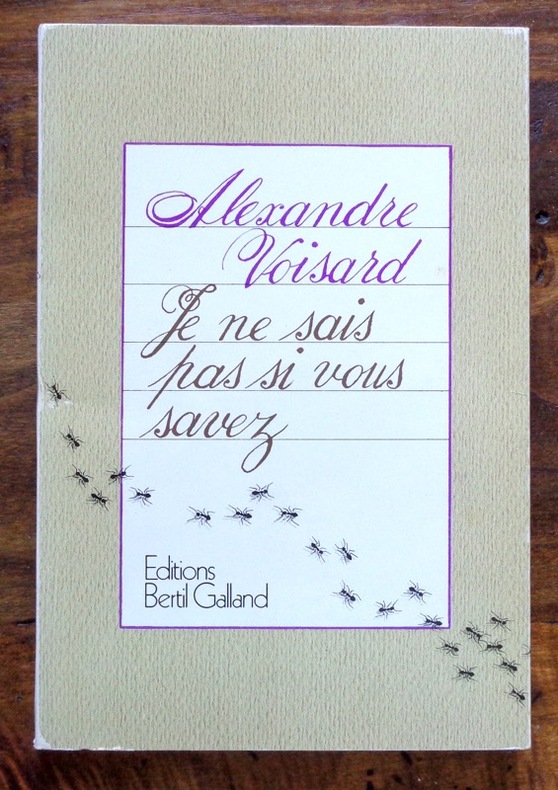
|
|
|
Voix ouvrière.
Voix ouvrière, supplément au n° 30 (7 juin 1968).
Paris Voix ouvrière 1968 1 vol. en feuilles Tract dactylographié daté du 7 juin. Protestation contre les violences policières de Flins, pointant du doigt la responsabilité de la CGT : "Qu'attendent les dirigeants de la CGT pour organiser la riposte ? Vont-ils continuer à prêcher le calme devant l'agression policière alors qu'ils déploient tout leur zèle à faire la chasse aux "gauchistes" ?".
Referentie van de boekhandelaar : 93143
|
|
|
Voix ouvrière.
Voix ouvrière, supplément au n° 30 (7 juin 1968).
Paris Voix ouvrière 1968 1 vol. en feuilles Tract dactylographié daté du 7 juin. Protestation contre les violences policières de Flins, pointant du doigt la responsabilité de la CGT : "Qu'attendent les dirigeants de la CGT pour organiser la riposte ? Vont-ils continuer à prêcher le calme devant l'agression policière alors qu'ils déploient tout leur zèle à faire la chasse aux "gauchistes" ?".
Referentie van de boekhandelaar : 93143
|
|
|
Voluer (Philippe)
Deux siècles d’Affiches de la bière
Citedis 1998 In-4 Cartonnage éditeur, 120 pp. Illustrations couleurs
Referentie van de boekhandelaar : 3774
|
|
|
VOSS JAN (né en 1936)
affiche Lithographie en couleurs, 565x760mm.Signée Voss 65 et numérotée 27/190. (102995)
Referentie van de boekhandelaar : 102995
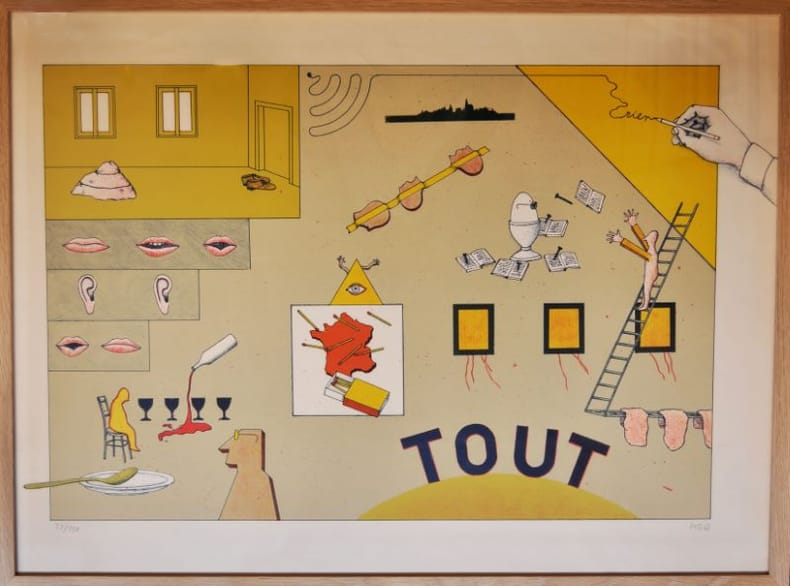
|
|
|
Voss Al
Métal Hurlant (affiche de kiosque du n°22, de octobre 1977, illustrée par Al Voss)
Humanoïdes associés Métal Hurlant Affiche 1977 "PEU COMMUN ET EN TRÈS BON ÉTAT. Affiche de Kiosque en papier cartonné au tirage réservé aux abonnés de la revue mensuelle Métal Hurlant, reprenant la couverture du numéro 22 (octobre 1977) ""Star War / Sperme opera / Sex pistols / Heilman"", au format (30,5 x 39,5 cm.), dessin de Al VOSS rare ; un coin légèrement plissé, par ailleurs TRÈS BON ÉTAT. Livraison a domicile (La Poste) ou en Mondial Relay sur simple demande."
Referentie van de boekhandelaar : af64
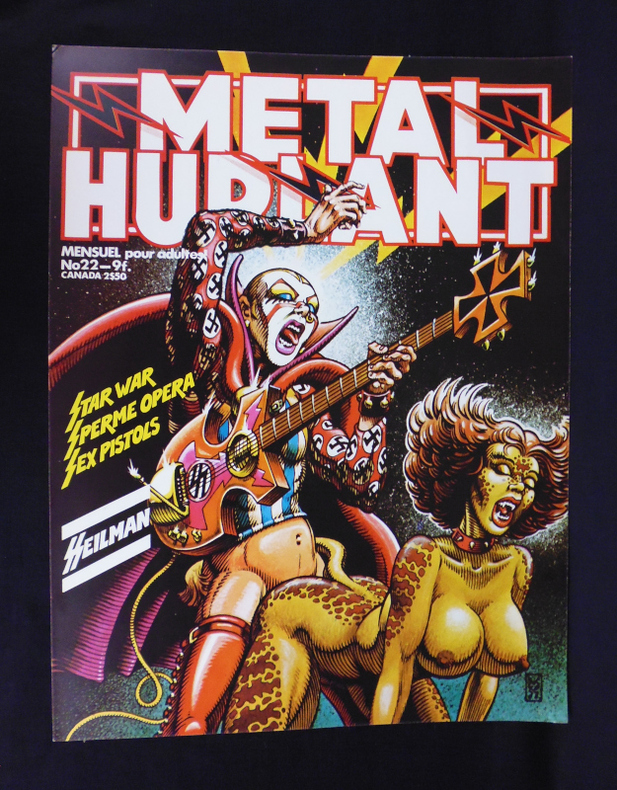
|
|
|
Vostell, Wolf
Olympia 72.
München., Kerlikowsky + Kneiding Kunsthandlung., 1971. 64 x 47 cm. 1 Blatt., 65292AB Sehr gutes Exemplar.
Referentie van de boekhandelaar : 65292AB

|
|
|